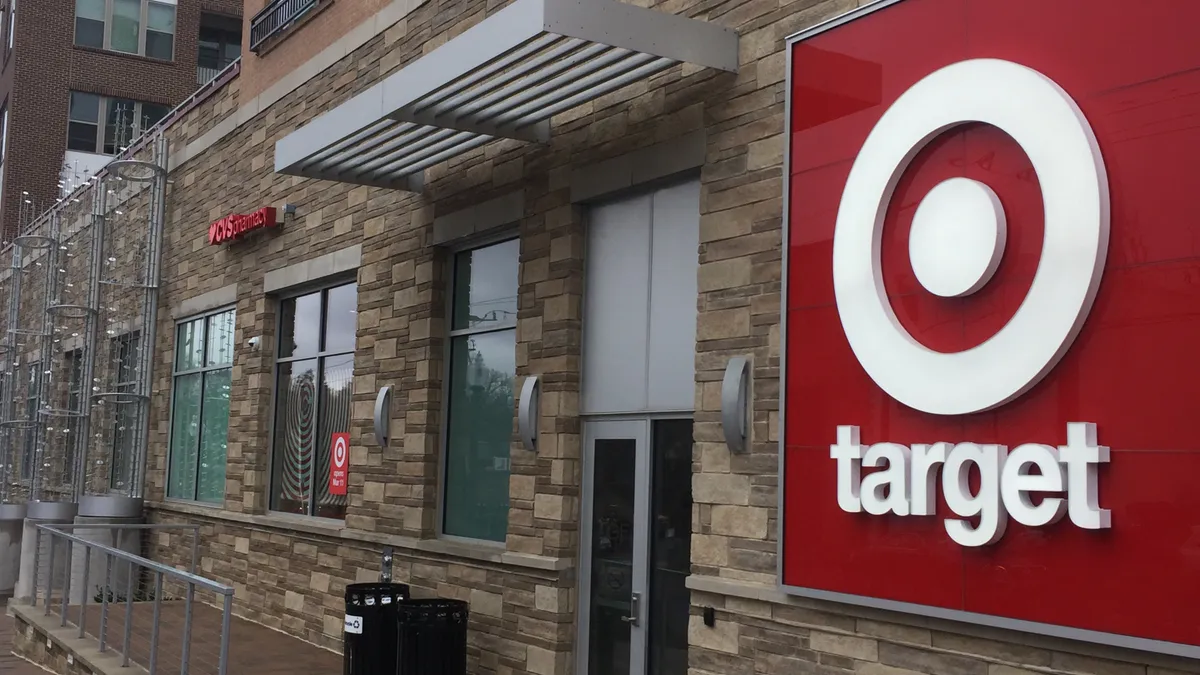Dive Brief:
- Target's customer traffic is off to a "torrid" pace in the third quarter with sharp year-over-year spikes in the back-to-school season, according to research released this week by foot traffic analytics firm Placer.ai.
- The firm found that customer visits to Target the week of Aug. 12 jumped 27.5% above the retailer's baseline, well over the previous year's back-to-school bump.
- The two weeks prior to that of Aug. 12 saw spikes of 21.1% and 15.3%, respectively, over Target's baseline traffic. That means "the Back-to-School period may actually be extending for Target," according to Placer.ai's Ethan Chernofsky, vice president of marketing.
Dive Insight:
Chernofsky described Target's back-to-school traffic spikes as "significant Year-over-Year improvements that point to the potential for an exceptionally exciting quarter." The spikes are higher than years past and also come against growth supported by "massive peaks" during the holiday season.
Placer.ai also looked at Target's traffic against Walmart's. The latter dominates in traffic. While Target took a respectable share of 14.8% of Placer.ai's Grocery and General Merchandise index, Walmart took 47.3%, "putting them in a class of their own," Chernofsky wrote in a blog post.
Target's advantage is that its shoppers, on average, have more money. Nearly 18% more of Target shoppers make more than $100,000 a year compared to Walmart, according to Placer.ai. That, as Chernofsky wrote, becomes an advantage as Target builds out its portfolio of small-format stores in urban areas, which have higher concentrations of high-income shoppers.
If Target does indeed post stellar Q3 performance, it would build on a strong Q1 and Q2 this year, both of which showed the mass merchant making gains across the board. Q2 brought Target's best two-year comps (10%) performance in more than a decade.
Target, like Walmart, is seeing the fruits of heavy investments in previous years, as both mass merchants try to modernize their digital, store and omnichannel operations to catch up with Amazon, and perhaps to steal share from weaker competitors.
Like Walmart, Target has relied on its stores for gains. Along with adding smaller format locations (about 30 per year), Target has remodeled even more existing stores (more than 300 in 2018 alone). Target is also leaning on stores for e-commerce fulfillment, which happily for the retailer happens to be a more profitable way of doing business. That includes in-store pickup, as well as its Drive Up service, which now reaches all 50 states and about 1,750 Target stores.














